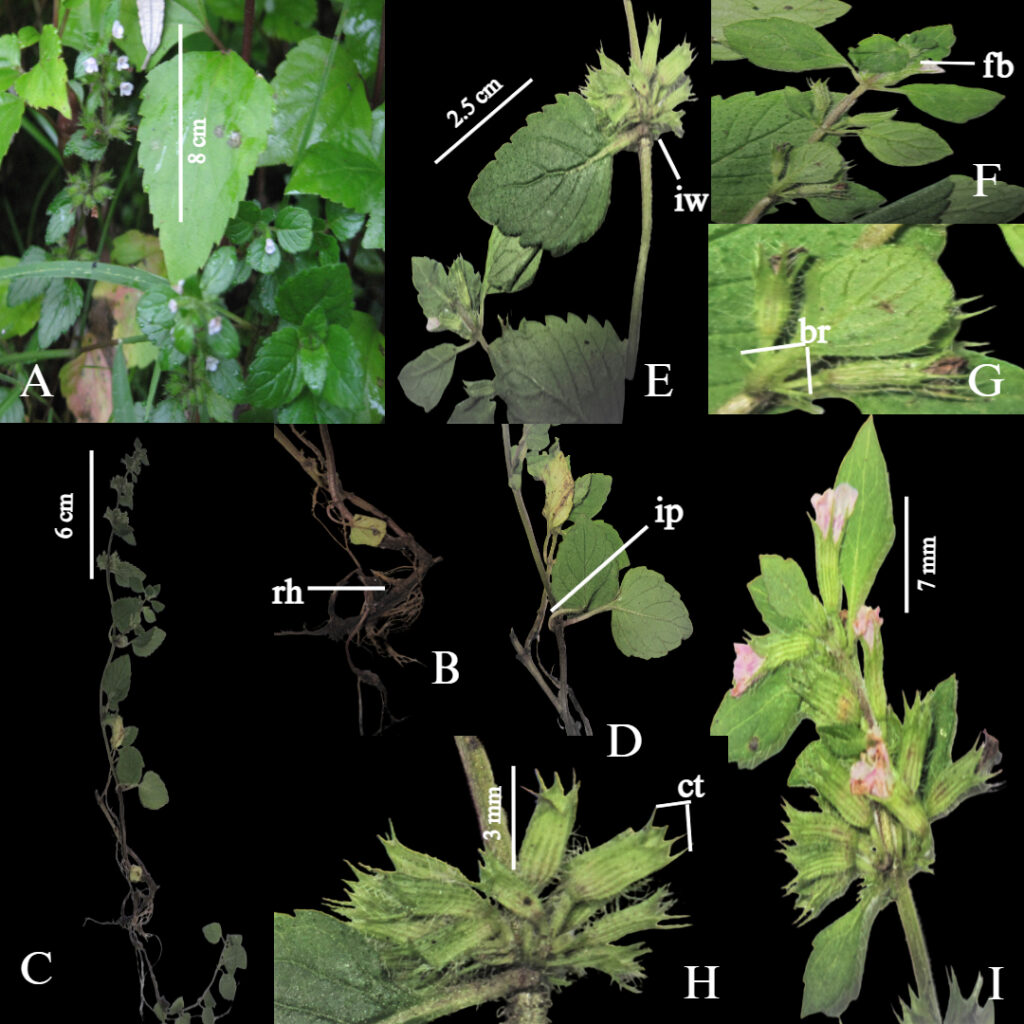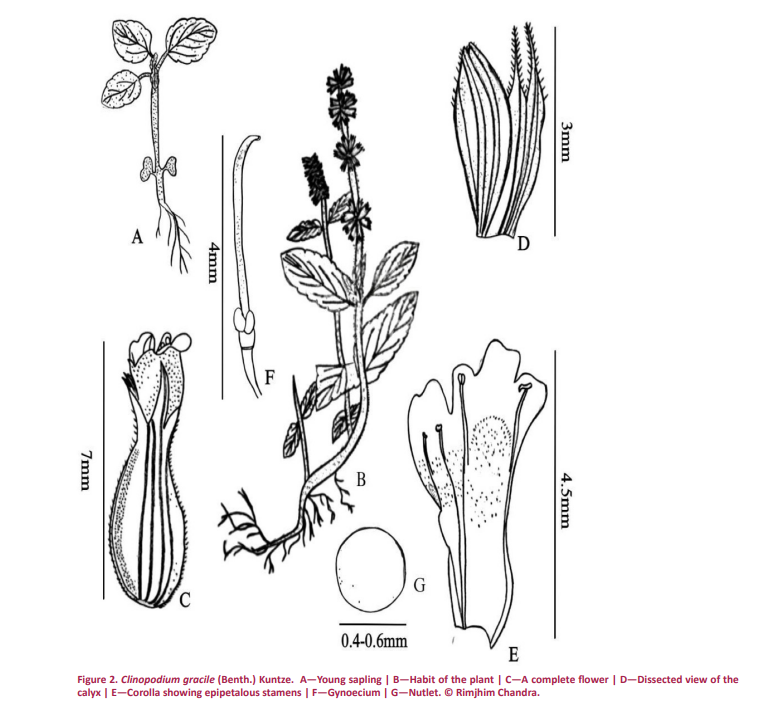Small perennial herb, slender, stoloniferous; Stem quadrangular, numerous, tufted, erect or procumbent at the base, ascending, 8–30 cm, retrorse, pubescent; Leaves opposite, basal leaves circular-ovate, 1.2–1.5 × 1–1.1 cm, base rounded, apex obtuse, margin remotely crenate, lower and mid stem leaves ovate, 1.5–2.5 × 1–1.5 cm, papery, sub-glabrous, abaxially sparsely hispid on veins, apex obtuse, base rounded to cuneate, margin
remotely dentate or crenate-serrate, petioles 0.3–1 cm; Inflorescence verticillasters, few-flowered (5–10), lax or
dense, crowded in short terminal raceme, floral leaves ovate-lanceolate, 0.5–1 × 0.3–0.8 cm, margin serrate, acute; Bract linear, acute, puberulous, much shorter than pedicel; Flower rose-pink, 5–7 × 3–4 mm, pedicel 1–3 mm; Calyx tubular, base rounded, ca. 3–5 mm and declinate in fruit, puberulent or subglabrous, minutely hispid on veins, throat sparsely fine pilose, teeth ciliate, lower two subulate, upper three triangular, reflexed
in fruit; Corolla ca. 4.5 mm, puberulent; nutlets ovoid, smooth 0.4–0.5 mm (Image 1 and Figure 2). Common name: Calamint, Savory, Slender Wild Basil, Tower Flower.
Flowering: The flowering has been observed in July.
Habitat: Stream sides, open grasslands, forest margin, and thickets.
Location: Chamba, Himachal Pradesh.
Date of Collection: 27 July 2023.

its vegetatve and reproductve parts | D—Abaxial surface of leaf with leaf petole (lp) | E—Adaxial surface of leaf and inforescence whorl (iw)
| F—Young shoot displaying foral bud (f) | G—Base of pedicel manifestng bract (br) | H—Calyx portraying its tooth (ct) | I—Vertcillaster
inforescence exhibitng fower arrangement. © Rimjhim Chandra.
